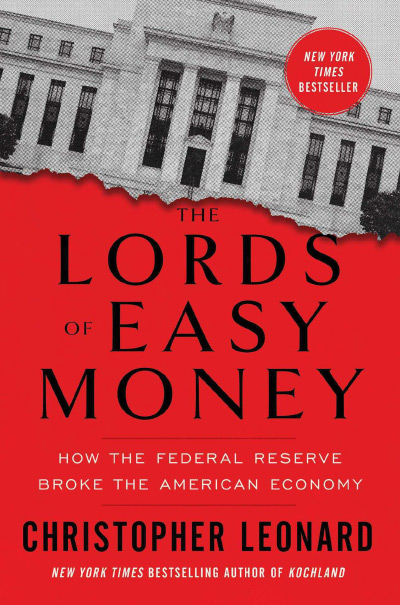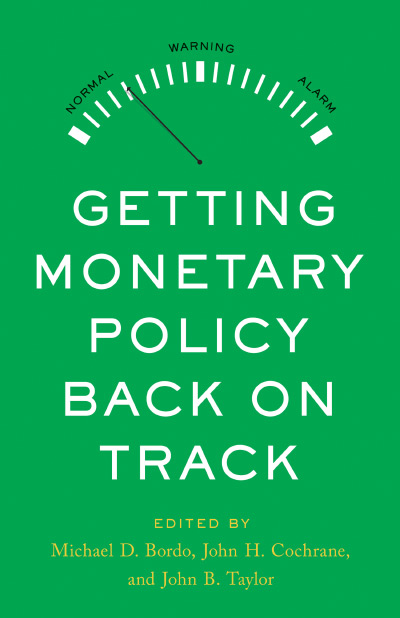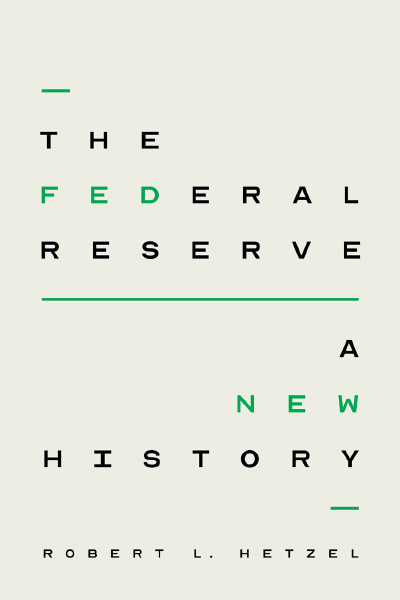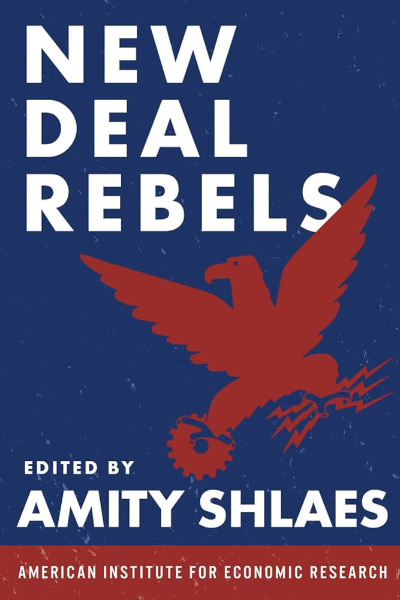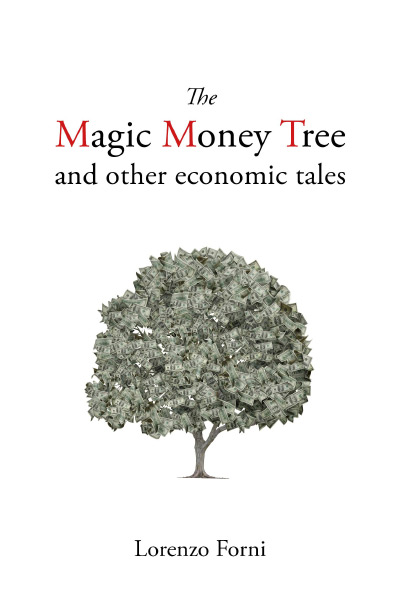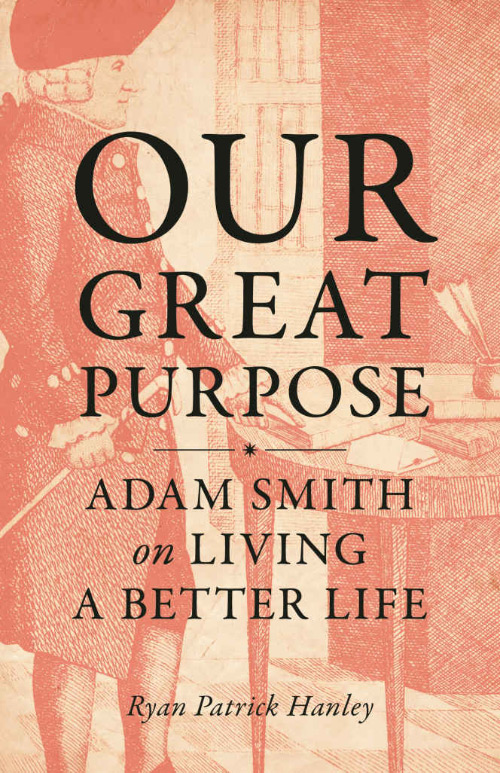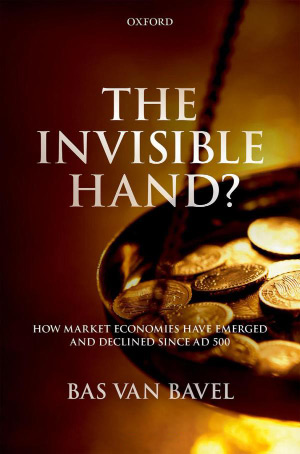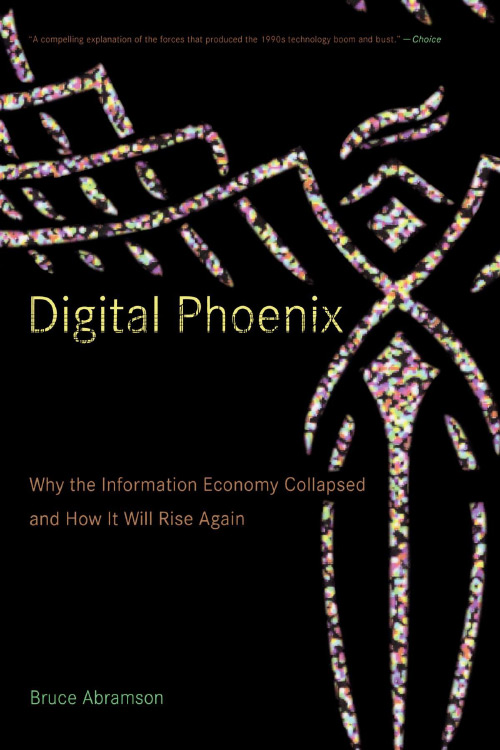Author Christopher Leonard is a journalist, not an economist. Not surprisingly, the value of The Lords of Easy Money lies mostly in its behind-the-scenes accounts of how monetary policy was made over the last twelve years and not in its layman’s theory of how the macroeconomy works or in its narrative macroeconomic history. Nonetheless, from talking to practitioners, Leonard has gotten hold of an important insight. Artificially cheap credit has encouraged and financed unsustainable investment booms: “Asset inflation was the force behind the dot-com crash of 2000, the housing market crash of 2008, and the unprecedented market crash of 2020 ... The Federal Reserve can stoke asset inflation when it keeps money too cheap for too long” (p. 54). Leonard draws no direct inspiration from Austrian business cycle theory, and indirectly indicates that his own political views are those of a New Deal Democrat.
The book has many technical errors that will annoy specialists in monetary economics. For example, the word dollar is not, in fact, “just a slang term for American currency” (p. 4). It is neither slang (being an official term), nor specifically American (the Spanish silver dollar long predated the U.S. dollar), nor does it designate only currency (most dollars today are in deposit form). It is inaccurate to say that when the Fed expands the monetary base it “makes new dollars and deposits them in the vaults of big banks” (p. 6). The primary dealers from whom the Fed makes open market purchases are not banks, and the assets that the Fed gets are securities, not deposits. Leonard repeats the myth that America’s “free banking” era “was lunacy” and “a disaster” because “things can’t work without a central bank” (p. 45). In fact, free banking systems without central banks have been quite successful. In providing a potted history of the Federal Reserve Act, Leonard cites William Greider’s Secrets of the Temple rather than any works by reputable economic historians. Assets pledged as collateral for a bank loan do not appear on the bank’s books (p. 50). Banks write down the book value of bad loans, not the value of the collateral (p. 57). Deflation of the price level is not ipso facto “a suffocating death spiral for any economy” (p. 223). It can instead serve as a conduit for improving real standards of living when driven by growing real output. Deflation was not “a central problem” in 2019 (p. 237).
Leonard’s account shows a penchant for overstatement. It’s not true that the failure of Penn Square Bank in 1982 “almost took down the entire U.S. banking system with it” (p. 63). Nor that the hedge fund Long Term Capital Management “nearly destroyed the financial system when it collapsed in the late 1990s” (p. 111). Nor that there has been an “epochal collapse of America’s manufacturing sector” (p. 188). It’s an exaggeration to say that when Jay Powell became Fed chair, “the financial system was already falling apart” (p. 231).
The book’s narrative shines a spotlight on Thomas Hoenig, who became president of the Federal Reserve Bank of Kansas City, and thereby a member of the Federal Open Market Committee, in 1991. Leonard evidently conducted lengthy interviews with Hoenig about his experiences as a monetary policy maker. In Leonard’s account, loosening by Fed Chair Alan Greenspan in 1992 marked “the beginning of a new era of easy money” (p. 75). Greenspan’s policy of keeping interest rates too low for too long fed the asset price inflations of the dot-com boom and then the housing boom. Greenspan retired, and Ben Bernanke became Fed chair in 2006, just in time for the crash of 2007–09. Bernanke kept the Fed’s interest-rate target at near-zero long after the economy began to recover. Fearing yet another bubble, Hoenig began to dissent in Federal Open Market Committee (FOMC) votes starting in late 2010.
Leonard notes that Hoenig warned about “the dangerous ‘allocative effects’ of 0 percent interest rates” (p. 27). Leonard emphasizes Hoenig’s warning that when riskfree rates are zero, in the presence of moral hazard from too-big-to-fail policies and from a general Fed assurance that it will keep asset prices from falling (once known as the “Greenspan Put”), pension funds and other financial intermediaries “search for yield” by taking on more default risk. (Austrian business cycle theory emphasizes that they also take on more duration risk and refinance risk, but Leonard does not emphasize duration choice in investment or in funding.) Hoenig warned about the danger of asset price bubbles. He warned about the danger of un-anchoring inflation expectations. Ignoring his warnings, the FOMC compounded the malinvestment effects of keeping interest rates too low for too long by promising that rates would stay low for an extended period.
On the Federal Open Market Committee, Hoenig had support only from a few regional reserve bank presidents: Charles Plosser of Philadelphia, Jeffrey Lacker of Richmond, and Richard Fisher of Dallas. Hoenig faced considerable criticism from Ben Bernanke and others on the FOMC. Leonard oddly describes this criticism by writing (p. 17) that Hoenig was seen as “something economists called a ‘Mellonist,’ a term that refers to Andrew Mellon.” I have never seen or heard any economist use the label “Mellonist,” although I have seen and contributed to the journal literature on what economists do call “liquidationism,” the view that no action should be taken to mitigate recessions or depressions, the view that Mellon has often been accused of holding. According to a Google search, the only person to refer to Hoenig as a “Mellonist,” other than Leonard himself, was a single pseudonymous commentator on an economic blog in 2010. By the way: Mellon was not a liquidationist (see Lawrence H. White, “Did Hayek and Robbins Deepen the Great Depression?” Journal of Money, Credit and Banking 40 (June 2008): 751–68).
When Leonard looks behind the scenes at the Fed, we learn that Bernanke counted his votes and “lobbied the governors between meetings.” He modified the agenda as necessary to maintain an FOMC supermajority for his preferred policy option, but not as far as necessary to maintain unanimity: “Bernanke was willing to accept one dissenting vote from a regional bank president, but not much more than that” (p. 129).
In mid-book the spotlight begins to switch between Hoenig and Jerome Powell. A long detour takes us through Powell’s backstory. This includes his years at the Carlyle Group, a private equity firm said to derive its profits from “leveraging the connection and influence of Washington insiders,” and in particular his work leveraging up an industrial client firm, Rexnord. The narrative then morphs into a denunciation of leverage in general and of collateralized loan obligations, or CLOs, as a leveraging device in particular. We return to Hoenig, who became vice chairman of the FDIC in 2012, and his efforts to segregate exotic lines of financial deal-making at commercial banks from the basic deposit-taking and loan-making lines. Then back to Powell, who joins the Federal Reserve Board of Governors in 2012. Powell, although initially giving verbal support to Hoenig’s concerns about asset bubbles, “never cast a dissenting vote” on the FOMC and instead “started to soften his criticism.” Once he “came to embrace” easy money policies, Powell gained “growing clout within the Fed” (p. 222).
Leonard draws attention to an “invisible bailout” by the Fed in 2019–20. In September 2019 there was a surprising spike in repo market overnight interest rates. Because the Fed’s forward guidance promised that short-term interest rates would not rise, many hedge funds had taken to financing their operations not with long-term loans but by borrowing massive amounts overnight, every night. A spike in overnight rates destroyed the profitability of that approach and threatened to force hedge funds to dump Treasuries and mortgage-backed securities on the market, upsetting the Fed’s plans to keep their prices high. The Fed intervened to keep repo rates low, first providing $75 billion in overnight loans, and soon more than $120 billion. As Leonard notes, “the Fed Put was being expanded” (p. 257). Hedge funds responded to the cheap-money program by taking on even more leverage. In March 2020, as COVID-19 concerns hit financial markets, the Fed provided $500 billion, then $1 trillion, to prop up Treasury bond prices.
Leonard notes that Powell was communicating throughout this period with Treasury Secretary Steven Mnuchin. During March they spoke “roughly twenty times a day.” What emerged was “a complex rescue package that would include several interlocking bailouts, each targeting different parts of the financial system” (p. 277). So much for Fed independence. So much for the traditional notion that a lender of last resort’s role is to protect the payment system, not to rescue insolvent firms or segments of the financial industry. Leonard aptly quotes trader Scott Minerd, who noted that “we have now socialized credit risk.... The Fed has made it clear that prudent investing will not be tolerated” (p. 282).
| Other Independent Review articles by Lawrence H. White | |
| Summer 2010 | Central Banking in a Free Society |
| Winter 2002/03 | Accounting for Fractional-Reserve Banknotes and Deposits—or, What’s Twenty Quid to the Bloody Midland Bank? |
| Winter 1999/00 | The Defining Moment: The Great Depression and the American Economy in the Twentieth Century |


